IndiaWilds Newsletter Vol. 7 Issue X
Green Tax
The National Green Tribunal headed by Justice Swatanter Kumar has ordered that an Environmental Compensation Charge be slapped on all trucks entering Delhi.
With amounts ranging from 500 to 1000 rupees, it is expected that the truck owners would immediately take other routes and avoid entering into Delhi if their destination is elsewhere. Delhi, which is reeling under the smoke spewed by these trucks, will have a bit better air quality than before.
On the surface this Environmental Compensation Charge, euphemistically referred to as “Green Tax”, appears to be good because most of the trucks that enter into Delhi are supposed to use the bypass, as their destination is else where. Normally truck drivers take routes where the toll charges are less. So these trucks ply on the roads of Delhi and create traffic jams, mostly in the night.
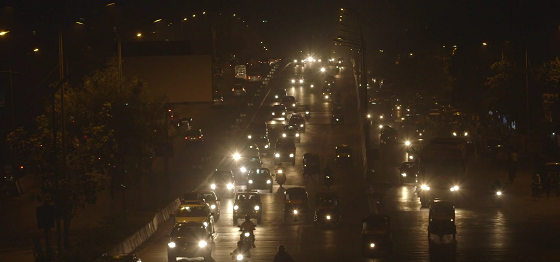
Traffic causes sound pollution in cities
During the daytime there is lot of pollution due to the vehicular emissions. In the night the traffic is reduced and hence the city should be able to breathe well. However, due to the truck traffic in the night, the level of pollution doesn’t come down at all. So people living in Delhi breathe polluted air throughout the day and night, non-stop, every day and night in the year.
This higher toll on the trucks mandated by the SC also implicitly means that the polluter has to pay for the pollution caused. This is in line with the Polluter pays principle. So philosophically it is good.
The question that arises is, does it solve the core problem?
The higher toll to be paid will result in the trucks using the bypass to avoid Delhi. However, they continue to spew venom into the air throughout their journey. So though Delhi may get some respite from some of them, other villages, towns and cities on their way will continue to suffer from the noxious fumes emitted by these trucks. One may argue that some State Governments may also slap a similar higher toll on trucks entering into their states or key cities, not because of doing good or making the polluter pay but to just seize an opportunity to make money.
So when all the major cities and/or State Governments start slapping higher toll charges on the trucks, the trucks will feel the pinch. So what will they do? The first reaction is that they will ofcourse pass on the costs to their clients who in turn will charge higher for transporting goods and that is likely to have a cascading effect on the prices.
However, given the competition, some transporters are likely to move on and invest in new-age vehicles with higher capacity as the environmental compensation charge is now Rs. 700 for two axle vehicles, Rs. 1000 for three axle vehicles and the lowest slab of Rs. 500 is for four axle and higher vehicles. So transporters will be forced to invest in four axle and higher vehicles which carry more tonnage, are more efficient and cause less pollution than the previous generation and lower tonnage vehicles.
As such in India, overloading is a massive problem. Trucks are routinely overloaded beyond their carrying capacity as the transporters try to make more money. Due to overloading, there is much more pollution from the vehicles and the roads also breakdown soon.

Overloaded Truck Courtesy – Online media
I have been criss-crossing the country side in my Tata Safari documenting our amazing bio-diversity. In my recent drive in the key industrial route from Delhi to Mumbai, too often even in the empty roads I had to suddenly apply the brakes to lower the speeds as the roads have been damaged due to overloaded. The contractors suggest that they maintain the roads but the overloading exceeds the specs and hence damages the roads.
The vehicular emissions are also related to the improper quality of fuel available in this country. When a country could send a spacecraft “Mangalayaan” to Mars at the fraction of the cost incurred by other developed countries, it is indeed a mystery as to why India doesn’t have good quality fuel compared to them. Surely technology is not a bottleneck for the low quality fuel. Government has to be serious as the primary fuel companies are Government owned and it has to ensure sufficient investments in Indian Oil, Bharat Petroleum etc so that we get as good automotive fuel as is available in developed countries.
The quality of fuel available in India is also poor as there is rampant adulteration by mixing it with kerosene which is subsidised by the Government for poor people. Since not many people use Kerosene these days due to the proliferation of gas and electric stoves/heaters, the Government has to ensure that subsidy on kerosene is removed and Kerosene is not diverted for adulteration. Till date the mechanism to prevent adulteration of automotive fuel has failed. The Government has to completely stop this to ensure good fuel quality and less pollution.
In an increasingly concrete world devoid of trees, there is nothing to absorb the atmospheric pollution. The effect of trees in absorbing carbon dioxide through their stomata and giving back oxygen is well known. However, the role of trees in absorbing gaseous pollutants through stomata and interception of particulate matter on plant surfaces is not realised by planners as well as environmental activists.
Trees and forests in United States removed 17.4 million tonnes of air pollution in 2010 with human health effects valued at 6.8 billion US dollars. This pollution is equivalent to an average air quality improvement of less than one percent. (Nowak, David J.; Hirabayashi, Satoshi; Bodine, Allison; Greenfield, Eric. 2014. Tree and forest effects on air quality and human health in the United States. Environmental Pollution. 193: 119-129)
Most of the air pollution removal was in rural areas due to the presence of higher amount of trees and forest cover. If our urban planners, Highway authority take this into cognisance and plant more trees then some of our air pollution can be arrested at source.
I find most of our highways are aping the American highway landscape as it looks barren due to the cutting of the trees for highway construction. In the barren land with the highway in the middle, I find there is increase in body roll while driving my Tata Safari at around 120/130 kmph. This is especially severe while cornering at those speeds. Planting trees on both sides of the roads for a few meter patch like a corridor would help in cutting down the wind and would increase the safety of vehicles. The resulting lower wind resistance should also be beneficial in terms of fuel efficiency.
At the moment the contractors maintaining highways only plant flowering species in middle divider space. Though these flowering plants can act as hedges and cut the high beams of vehicles coming from other sides of the road at night, during daytime it attracts butterflies and most of these hit the vehicles and die. In a barren landscape, these flowering plants are the only source of attraction for them. If sufficient native trees and plant species are planted on both sides of the road creating a thick corridor like tree barrier, then it would alleviate this problem. The shade provided by the tress can also help reducing the ambient temperature resulting in use of low air-conditioning in vehicles and thus increasing the fuel efficiency. The NHAI (National Highway Authority of India) needs to specify in its tender conditions that contractors need to plant native tree species. This will help in creating favourable micro-ecosystems for herpeto-fauna, smaller mammals as well as bird species.
The NHAI (National Highway Authority of India) which is fighting a bitter battle to not spend money in creating overpasses for wildlife on NH7 has no love for wildlife. Atleast, if it would understand that tree plantation would be of help in improving the drivability in the roads and reduce accidents, then some progress may happen. I hope this Environmental Compensation Charge leads us to an era where air pollution due to automobiles is examined in a holistic manner and suitable action taken so that it plays its role in containing climate change.
A Primer on Sound Pollution
By Dr. Rashmi Rekha Patra
http://www.indiawilds.com/diary/a-primer-on-noise-pollution/
Book Review
Shola Forests of Kerala: Environment and Biodiversity
http://www.indiawilds.com/diary/shola-forests-of-kerala-environment-and-biodiversity/
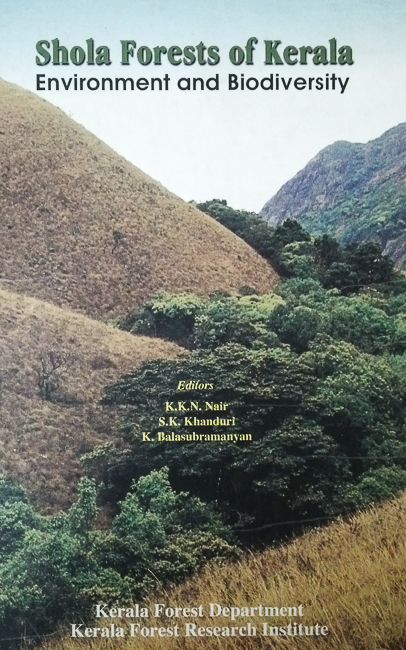
Shola Forests of Kerala: Environment and Biodiversity
Conservation News:
First dolphin community reserve to come up in Bengal
Kolkata, 9th Oct 2015
The State Wildlife Board has decided to have the country’s first community reserve for the Dolphins to protect the endangered Gangetic river dolphins.
The number of dolphin is estimated to be less than 2,000 in the country.

Irravady dolphins Image Courtesy – Mrudul Godbole
State Chief Wildlife Warden Azam Zaidi told “A committee is being formed to examine in what way the community reserve would be set up in the Hooghly river between Malda and Sundarbans. We’ll take all stakeholders together in this initiative. It is expected that it would be ready within a year’s time.
The stretch of the river is not within a forest or a sanctuary so it is very important to involve all stakeholders for protecting dolphins. We want to spread awareness, control noise pollution and have cleaner water for conserving dolphins,”.
The stretch of Hooghly in West Bengal, is roughly 500 km long and it passes through Kolkata before merging with the Bay of Bengal in the Sundarbans.
A census would also be conducted to estimate the population of dolphins by the Forest Department.
This is a positive step towards conservation of this National aquatic animal of India.
New species of rock-dwelling lizard discovered
Oct 1, 2015, 12.42 PM IST
A new species of rock-dwelling lizard at Kanker district of Chhattisgarh.
The new species has been named Hemidactylus yajurvedi (Kanker Rock Gecko). The large-sized lizard having a snout-vent length (SVL) of up to 98mm is the 27th Hemidactylus species known in India.
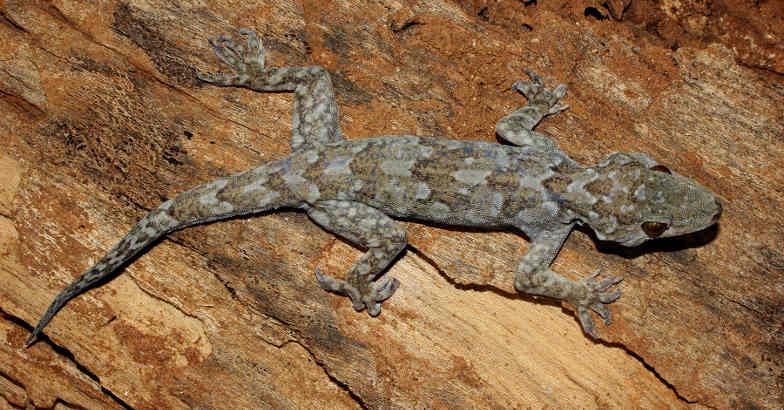
Rock-dwelling lizard Image Courtesy – Online media
The team which made the discovery included Aaaron Bauer, department of biology, Villanova University, USA; Aparna Lajmi, Centre for Ecological Sciences, Indian Institute of Science (IISc), Bangalore; Ishan Agarwal, National Centre for Biological Sciences (NCBS), Tata Institute of Fundamental Research, Bangalore; and Varad B Giri, Bombay Natural History Society, Mumbai.
The team of scientists was headed by B H Channakeshava Murthy of the Western Ghats Regional Centre, Zoological Survey of India (ZSI), Kozhikode.
He said “The team, while investigating the collections at the Zoological Survey of India (ZSI), Kolkata, came across lizard specimens labelled as Hemidactylus giganteus, collected from Kanker district of then Madhya Pradesh (now Chhattisgarh) state way back in 1979. However, a detailed examination raised doubts that the ZSI specimens could be of an undescribed lizard species and that they were wrongly assigned to this species due to their large size and superficial similarity in colouration.
The team visited areas around Kanker to establish the distinctiveness of the new species and collected additional specimens and tissue samples. Morphological and molecular examination revealed a distinct new species. The species has been spotted at five localities in Chhattisgarh in habitats mainly consisting of a mixture of dry deciduous forest and scrub vegetation.”
The new species has been named in honour of Hanumanth Narasimhachar Yajurvedi, professor, department of studies and research in Zoology at Manasagangotri, University of Mysore, for his contribution to the field of reproductive biology of reptiles and mammals.
http://www.indiawilds.com/forums/showthread.php?16954-New-species-of-rock-dwelling-lizard-discovered
Coral site found in Arabian Sea off Konkan coast
Oct 3, 2015, 10.37 PM IST
A coral site has been found mid-sea off the Konkan coast by the scientists of the National Institute of Oceanography (NIO).
The coral site is located in Arabian Sea, some 100-110km off the coastal districts of Ratnagiri and Sindhudurg of Maharashtra. The place is known as Angria Bank, named after famous Maratha Admiral Kanhoji Anger, who is known to have fought a battle there.
The expedition was initiated to study the biodiversity of the area by the forest department of Maharashtra. Funded by the United Nations Development Fund (UNDP), it was executed by the scientists of NIO in Goa at a cost of Rs 1.5 crore.
“For years we had an inkling that there could corals there. It was only after a project was commissioned by the Maharashtra government that we went under the sea to explore the place,” Baban Ingole, chief scientist of Biological Oceanography department of NIO.
On undertaking an expedition, first in January last year, they found a 800sqkm island submerged under the sea, some 100 miles off Vijaydurg fort in Ratnagiri district in Maharashtra.
Of this, only the tip of the island is visible during the low tide.
It was the first expedition where NIO’s (RV) Sindhu Sadhna was used.
During the expedition they found some 200 species of flora and fauna. There are 54 species of corals and four of them are soft corals on Angria Bank with different type of fish.
“The peculiarity of Angria Bank corals is that it is in the middle of the sea. Unlike other corals which are either coastal in nature like the Gulf of Mannar or the Andaman and Nicobar corals which are island corals, the Angria Bank is in the middle of the sea.
“It must have been an island some 10,000 years ago, which is now submerged under water. So, while the area around Angria Bank has a depth of 1000 meters, Angria Bank’s tip is just 24 feet deep.
“Since it was a hill or a small mountain it was an ideal place for the corals to grow with abundant sunlight and the elevation,” Ingole said.
He added that since it is away from the coast, it also saves the corals from pollution emanating from the coast.
The NIO scientists now plan to embark upon another expedition.
“We will undertake another expedition as soon as we get funds,” said NIO director SWA Naqvi said.
NIO scientists said the next phase could be funded by the ministry of environment and forest.
NIO is one of 37 constituent laboratories of the Council of Scientific and Industrial Research (CSIR).
Conservation Imagery
CORBETT: In search of elusive Tiger : Feb 1973 (Blast from the Past)
by Saktipada Panigrahi
We went to famous Corbett N.P in Feb,1973. We met Chief Conservator of Forests in his Lucknow HQ. He immediately approved 3 nights reservation in Dhikala F.R.H. He said you have to board the train that day itself otherwise 3 days( Rs.30 per day) booking was not possible, all other days were booked by foreign tourists. He also talked to Shri Negi, Deputy/Asst. Conservator based in Ramnagar to take care of us.
In those days live baits were tied up in the afternoon every alternate day near to a dense grassland (tiger habitat) which could be combed next morning if the Tiger has made the kill in the night. We got only one chance but the powerful tiger was successful in tearing the rope and dragging the buffalo to some hide and after combing thrice no trace could be found. ‘He has gone up the hills’, experts said.
In the afternoon we used to hire a trained elephant and roamed at our will. One afternoon the Mahut had shown us a tree at a distance and said there was a King Cobra nest there and whether we wished to go closer, to which we replied in the negative. We saw fresh kill ( Chital) but could not see the Tiger. Mammals were seen but their numbers were much less compared to sightings in May 1988. Only exception was Hog Deer, which was commonly seen in Feb 1973. I think, their best habitat was inundated under water of Kalagarh lake.
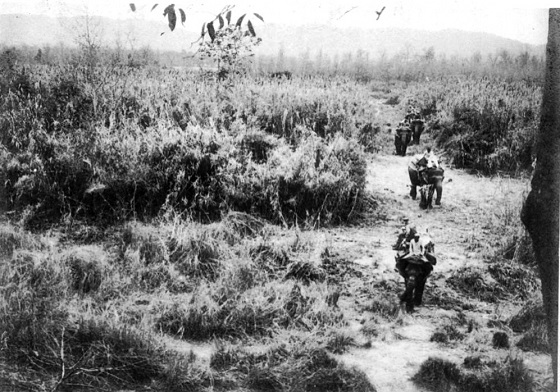
Corbett in February 1973
For more comments and images please click on the below link –
http://www.indiawilds.com/forums/showthread.php?16968-CORBETT-In-search-of-elusive-Tiger-Feb-1973
IndiaWilds App for Android Mobile
In India most of the internet penetration is happening through mobile phones. And the existing users who have access to desktops and laptops are becoming much more mobile then they used to be a few years ago. So to raise awareness and reach out to more people we need to adapt ourselves and make IndiaWilds easily accessed through a mobile phone using android OS.
Today, I am pleased to announce that we have created a mobile phone app so that people can access IndiaWilds anytime, anywhere without being tied to a computer. No need to type. One can access at the click of a button.
We have developed this app through Business Compass LLC a company based in Randolph, New Jersey, United States so that we create a good app.
Awareness is the first step before a person can become a champion of wildlife. I hope this will help us in reaching out to more people to raise awareness and make a real impact on the conservation landscape. If you have an android device then please download the app from this link:
https://play.google.com/store/apps/details?id=com.businesscompassllc.indiawilds
Equipment Discussions
Sigma’s new Wide Angle Low Light Lens

Sigma 20mm f1.4 DG HSM Art lens
Leica SL (Typ 601) Mirrorless Digital camera

Leica SL (Typ 601) Mirrorless Digital camera
Salient Features:
Sensor: Full Frame CMOS
Megapixels: 24 MP
Processor: Maestro II processor
ISO: From 50 to 50,000.
Video: Internal DCI 4K ie 4096×2160 pixels at 24fps with V-Log L gamma for preserving the maximum dynamic range. Also it offers UHD ie. 3840×2160 at 24fps as well as 25fps for PAL.
Stills Burst speed: 11fps shooting speed for a burst of 33 frames in DNG or unlimited JPEG shots as it has a 2 GB buffer.
Auto Focus: Leica claims that its contrast based AF system is the fastest among full frame cameras. It also has a Touch AF setting so that you can tap on a point and the camera with focus on it.
Recording Media: Two SD card slots.
Stills recording: It records still images at 14 bits DNG or as 8 bit JPEG files.
Video Sampling: The internal video is recorded at only 4:2:0 with 8 bits. However, it can be recorded externally through a Full HDMI at 4:2:2 10 bits. I would have loved it if it could internally record at 4:2:2 10bits.
Full HD (1920×1080) can be recorded at upto 120fps.
Video Assist tools: This camera features focus peaking, exposure simulation, clipping/zebras, grid overlays, aspect ratios, and safe area as is expected in a professional video camera.
Audio: The Leica SL comes with built in stereo microphone and 3.5mm microphone input as well as headphone jack. Manual as well as auto gain control is available.
LED: 2.95” LED has touchscreen and it has 1.04 million dots. The screen has anti-fingerprint and anti-scratch coatings along with a wide viewing angle of 170°.
EVF: Leica SL comes with a 0.66″ EyeRes 4.4MP electronic view finder with 60fps refresh rate and 0.8x magnification.
The Leica SL (Typ 601) camera has built-in Wi-Fi connectivity for remote control and image capture using the Leica SL App and a GPS unit for geo-tagging your photographs.
Flash: The Leica SL has TTL TTL-capable hot shoe and an X-sync terminal. It has a maximum flash sync speed of 1/250 second.
Sensor dust clean: Ultrasonic dust cleaning further ensures image quality remains at its peak by removing small particles without the need for deep cleaning.
Mount: The Leica SL has a Leica L bayonet mount which was first seen in the Leica T camera. The L mount can accept a variety of adapters.
Construction: Leica says that this camera is made of two solid blocks of aluminium and is weather sealed. It is made in Germany. It weighs 847 gms.
Price: $7450 USD for the camera body
Buy: You can buy this camera at B&H http://www.bhphotovideo.com/c/produc…990/KBID/13252
Natural History
COUNTRY NOTEBOOK: M. Krishnan: ‘Swimming Macaques’ By Saktipada Panigrahi
http://www.indiawilds.com/forums/showthread.php?8852-Country-notebook-m-krishnan&p=77200#post77200
Mechanism behind the “Take-off” of Grey Heron (Ardea cinerea)
Wildlife Photography
Wild Dogs : April 1980 in Simlipal by Saktipada Panigrahi
Ruddy Mongoose by Shyamala Kumar
http://www.indiawilds.com/forums/showthread.php?16880-Ruddy-Mongoose-Just-plain-curiosity
Aggression by Kaustav Chatterjee
http://www.indiawilds.com/forums/showthread.php?16869-Aggression
Little Cormorant by Nishith Kumar
http://www.indiawilds.com/forums/showthread.php?16921-Little-Cormorant
Common Kingfisher by Vipin Sharma
http://www.indiawilds.com/forums/showthread.php?16940-Ranthambore-diary-May-14
Aggressive pose by Jumping Spider by Prajwal Ullal
http://www.indiawilds.com/forums/showthread.php?16931-That-aggressive-pose-the-Jumper
Cricket by Dheerendra Singh
http://www.indiawilds.com/forums/showthread.php?16879-Cricket-(singing-loudly)
Flower and Grass Hopper by Anil Kumar Verma
http://www.indiawilds.com/forums/showthread.php?16894-A-flower-amp-a-grasshopper
I look forward to your inputs and support in preserving the last tracts of wilderness and wildlife left in our beautiful country. For other interesting articles and images check –http://www.indi
To post in the IndiaWilds forums, you can register free of cost using your Full Name as user id at
http://www.indiawilds.com/forums/register.php
If you are already a member of IndiaWilds and have forgotten your user id and/or password you can mail to
administrator@indiawilds.com
If you want to contribute original articles, or for any image enquiries please send a mail to
administrator@indiawilds.com
Regards,
Sabyasachi Patra
Profile | Contact Us | Facebook | Diary | Equipment reviews | Forums | IndiaWilds You Tube Channel
Please post your views and feedback in the comments below.
- GoPro Hero 12 Black - 6 September,2023
- Leopards: The Last Stand - 2 July,2023
- Drifting in the Waters of Sundarbans - 26 March,2023


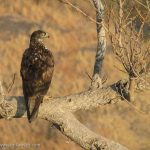











Leave a Reply